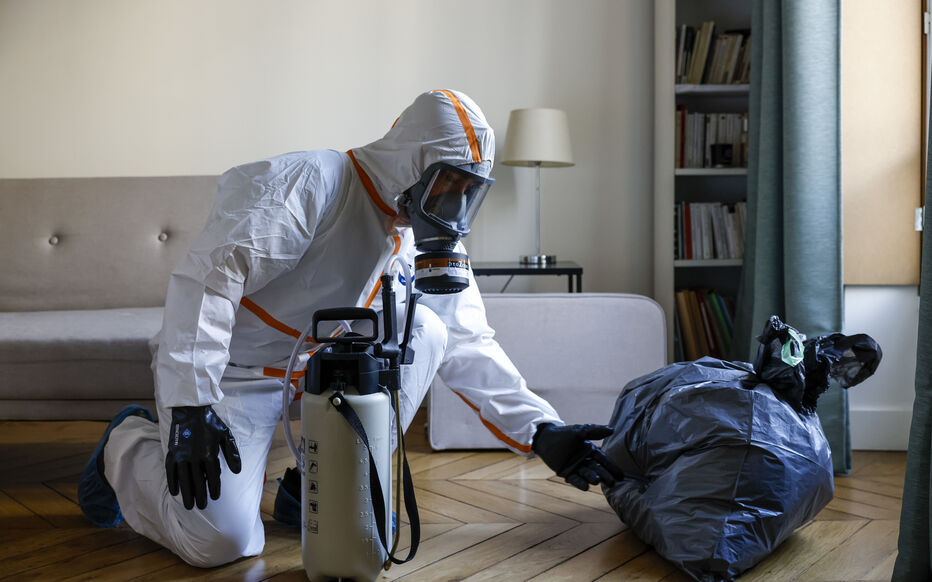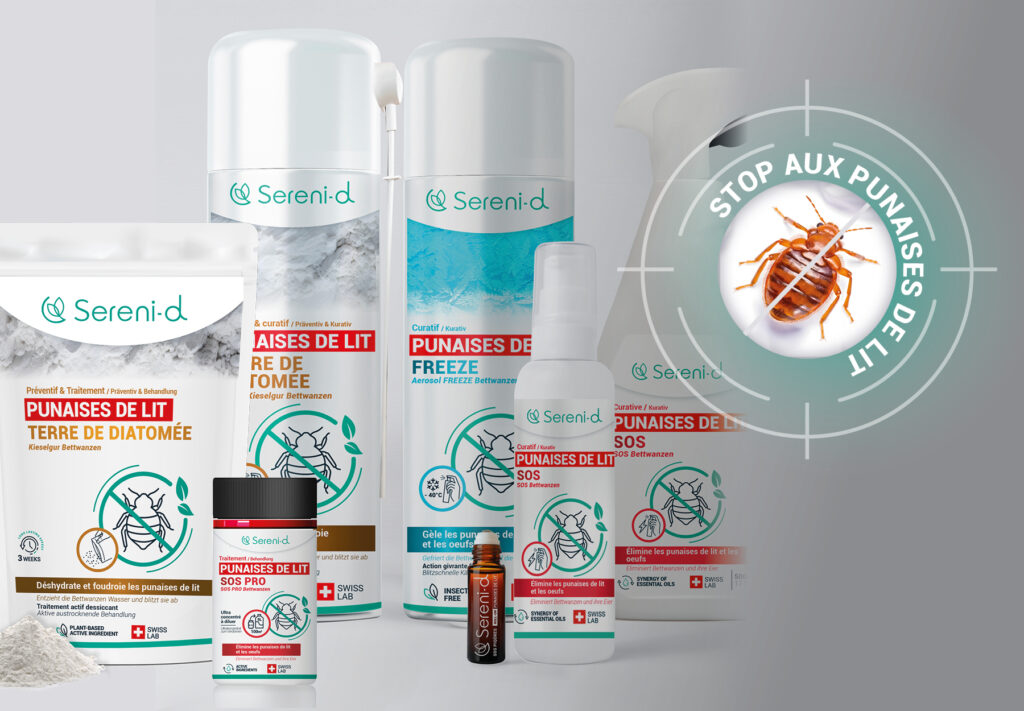Be careful, with the resurgence of bed bugs, unscrupulous ‘pseudo’ professionals have appeared on the market. Exorbitant prices, misleading diagnoses, use of ineffective products… unfortunately, scams are common. The price to pay is often high, not to mention the risks to your health.
Here is our practical advice to help you avoid being scammed and choose a competent professional!
Scams on the rise
The French Directorate-General for Competition, Consumer Affairs and Fraud Control (DGCCRF) is sounding the alarm. Reports of abuse have been on the rise recently.
Unfortunately, it is quite easy to panic when you find bed bugs in your home. In this context, decisions are sometimes hasty, and scammers know this very well… Fear and urgency are a perfect breeding ground for scams.
Some treatment companies offer services that are completely ineffective and even dangerous to health.
Cases of serious poisoning occur, often due to products that are banned from sale. The ANSES has already warned of this risk.
Bed bug scams: the 5 traps to avoid at all costs

1. A visual diagnosis without actual evidence
This is the most common scam: the ‘professional’ enters your home, takes a quick look at your mattress, observes a few stains on the sheets, and announces a massive infestation… without any evidence. In reality, traces of bed bugs can easily be confused with other pests or harmless stains.
Furthermore, it is important to remember that bed bugs are very small insects that hide in various places: skirting boards, electrical sockets, bedding, etc. At the beginning of an infestation, they are far from easy to spot with the naked eye.
A true professional never settles for a quick glance. They:
✅ thoroughly inspects bedding, bed frames, skirting boards and dark corners,
✅ looks for eggs, skins, live insects or traces of blood,
✅ recommends a dog detection service to confirm the presence of bedbugs.
Good to know: companies specialising in canine detection use trained dogs to detect bed bugs with a success rate of over 95%. This is currently the most reliable method if you have any doubts.
➡️ Here is all the information you need about canine detection.
⚠️ Be careful, the scam can go even further with pest control companies who discreetly place dead bed bugs in your home.
This was reported on the programme Envoyé Spécial:
A thorough diagnosis is the first essential step in effective treatment. If the technician does not take the time to check or refuses to show you evidence of the infestation, do not sign anything. Insist on concrete evidence before agreeing to any treatment.
2. Unapproved or dangerous chemical treatments
Some companies use insecticides that are non-compliant, ineffective or potentially hazardous to health. This is a common scam: the treatment seems professional, but the bed bugs return… or never disappear, because they have not been properly targeted.
Worse still, some use products that are banned in the UK or sourced from parallel channels, with no guarantee of safety for occupants, particularly children, sensitive individuals or pets.
A professional worthy of the name must:
✅ Be Certibiocide certified, which is mandatory for handling professional chemicals.
✅ Apply the treatment in regulated doses, following a precise protocol in two or three stages (7-10 days apart),
✅ Allow time for re-entry into the home, often several hours,
✅ Provide clear safety instructions (ventilation, protection of linen, temporary evacuation, etc.).


3. Excessive or unjustified prices
Another classic trap: you receive an approximate quote over the phone or online, but the final price skyrockets once the work is completed. Some fake professionals charge hidden fees or claim to have encountered an ‘exceptional situation’ to justify an unjustified additional cost.
Common examples: ‘The property is more infested than expected, we need a special product/a second visit/emergency treatment, etc.’
The result: you end up paying several hundred pounds more than you expected, sometimes with no lasting results. This scam affects many households, especially in large cities in the UK.
How to avoid this trap:
✅ Ask for a clear, written and detailed quote before any work is carried out.
✅ Check what is included: number of rooms, number of visits, type of product, any guarantee.
✅ Be wary of prices that are too low (less than £200) or too vague (‘from…’).
✅ Never pay in cash without an invoice, or in full in advance.
Average rates for bed bug treatment
| Type of treatment | Average price for 50m2 |
| Chemical treatment | €500 per visit |
| Heat treatment | 2500 € |
| Cold heat treatment | 2500 € |
| Canine detection | From £170 to over £500 |
4. Unrealistic promises: ‘guaranteed results in one treatment’
Some companies promise that a single treatment is enough to eradicate bed bugs. In reality, this is very rarely the case. Even with professional treatment, it is essential to schedule at least two treatments spaced 7 to 15 days apart to treat any eggs that have hatched in the meantime, as these are often resistant to the first treatment.
⚠️ A company that does not offer any follow-up or refuses to make a second visit is not reliable. You risk a rapid reinfestation of your home, with bites returning a few days or weeks later.
What a reliable professional does:
✅ They explain the complete protocol: number of visits, time frames, actions to be taken between treatments.
✅ They ensure that the infestation has been completely eradicated before completing their work (for example, by bringing in a sniffer dog).
Be wary of guarantees of results; it is impossible to promise a 100% effective result over several months.


5. No traceability or registration number
Sometimes, the company providing the service simply does not exist. No legal trace, no SIRET number, no address, no clearly identified manager. The result: if there is a problem, you have no recourse.
Of course, this lack of information is a major red flag.
What you need to check before any work is carried out:
- The company’s SIRET number (you can check this on societe.com or infogreffe.fr);
- Whether it has Biocide or Certibiocide certification, which is mandatory for the use of professional insecticides;
- The presence of a name, a business telephone number and a physical address in the UK on the quote or website;
- The clarity of the legal notices on their website.
How to choose a bed bug treatment company?
| Criteria to check | What to ask for |
| Registration | Verifiable SIRET number, company registered in France. |
| Specialisation | Clear mention of ‘insect control’ and ‘bed bug treatment’ on the website or quote. |
| Certifications | Certibiocide (mandatory for the use of professional insecticides) and ideally Certipunaise. |
| Methods used | Two-stage thermal and chemical treatment (with follow-up). |
| Quote | Free, clear, detailed: products used, method, number of visits, guarantee. |
| Traceability | Service report, product sheet, name of technician. |
| Precautions taken | Protection of furniture, advice for mattresses, customer support. |
| Customer reviews | Protection of furniture, advice for mattresses, customer support. |
| Responsiveness | Fast response time (less than a week), easy to contact, post-treatment follow-up. |
| Canine detection (optional) | Professionals who are members of the SEDCP (Syndicat des Experts en Détection Canine des Punaises de lit) and have obtained the Bureau Veritas ‘VALIDÉ RECONNAISSANCE PUNAISE EXPERTISE’ certification. |

The Serenid range of bed bug products
For effective treatment, Serenid offers a complete range of effective products for prevention, treatment and relief from bites.
In the event of an infestation, it is important to act quickly and effectively to prevent the situation from getting worse.
What should I do if I’ve been scammed?
Have you paid for an ineffective bed bug treatment? Is the company no longer responding, or refusing to return despite an ongoing infestation? You may be the victim of a scam.
Here are the steps to follow:
➡️ Gather as much evidence as possible: quotes, invoices, email or text message exchanges, photos of the work carried out or lack of results.
➡️ Dispute the service in writing: send a registered letter to the company clearly setting out the shortcomings you have identified.
➡️ Report the company: if no agreement can be reached, you can report it online via the official Signal Conso website. This platform allows you to alert the DGCCRF (fraud prevention agency) about dubious practices in the personal services sector.
➡️ Contact your home insurance company: some policies may cover disputes or offer legal assistance.
➡️ Contact a local UFC Que choisir association

Owner or tenant, who should pay?
Bed bugs discovered a few months after moving in
The Elan law of 23 November 2018 is clear: ‘The landlord is required to provide the tenant with decent accommodation that does not present any obvious risks to physical safety or health and is free from infestation by harmful species and parasites’.
If you are a tenant and discover bed bugs in your home after moving in (within a few months), the landlord is responsible for paying the treatment costs.
During the lease
If the infestation is detected several months after moving in, the situation is more complex.
The tenant may be held liable if the landlord can prove that the infestation was caused by negligence or lack of maintenance on the tenant’s part.
In practice, providing this type of proof can be complicated for the landlord.
➡️ Good to know: taking out bed bug insurance is very useful for both tenants and landlords.
Useful official resources in the event of bed bugs
| Ressource | Link | Main use |
| Stop-punaises.gouv.fr | stop-punaises.gouv.fr | Official government website: practical advice, prevention, treatment and rights of tenants/landlords. |
| Réseau des ADIL | 0806 706 806 | Free legal information on housing rights in the event of infestation. |
| Carte des professionnels agréés Prosane | prosane-punaises.fr | Directory of certified treatment companies, classified by geographical area. |
| INELP (Institut National d’Études et de Lutte contre la Punaise de lit) | inelp.fr | Professional resources, training courses, technical PDFs on the life cycle and eradication methods. |
| CS3D (Chambre Syndicale Dératisation, Désinsectisation, Désinfection) | cs3d.fr | Directory of certified companies, advice on choosing a reliable service provider. |
| SEDCPL (Syndicat des Experts en Détection Canine des Punaises de Lit) | sedcpl.fr | List of certified dog handlers, information on canine detection and recognised certifications. |
